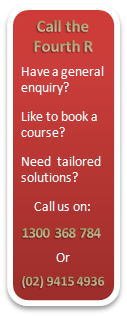 |
InDesign CS3: Advanced
Course Code: CT12-571
Outline |
Efficient layout
Document setup
Tint and gradient swatches
Object libraries and snippets
Item spacing
Vector paths
Creating vector paths
Vector paths and pictures
Vector paths and type
Typography
Manual type resizing
Quick Apply
Automated styles
Graphics in typography
Precise leading control
Composition, hyphenation, and justification
Horizontal spacing
Typography shortcuts
Typography
|
Graphics
Layer comps
Transparency
Object styles
Transforming objects
Graphics
Tables
Creating tables
Changing table structure
Formatting tables
Tables
Text editing
Story Editor
Special characters
Column, frame, and page breaks
Anchored objects
Long documents
Sections
Tables of contents
Indexes
Books
Footnotes
Long documents |
 |
 |
After completing this course, students will know how to:
- Set up multiple-page spreads; create tint and gradient swatches; use object libraries and snippets; and evenly space and align items.
- Create and edit vector paths; create and edit clipping paths; and wrap type on a path.
- Manually resize type; use Quick Apply; create nested styles and GREP styles; create path-based text wraps and convert type to outlines; precisely control leading, hyphenation, justification, and horizontal spacing; and use shortcuts with fonts.
- Use layer comps in a placed PSD file; create lighting effects; adjust transparency; define and use object styles; and transform objects by using the Pathfinder panel and Transform Again commands. Create, modify, and format tables; map Microsoft Word styles to InDesign styles; add headers and footers to tables; merge table cells; add editorial notes; and create table styles.
- Edit text with the Story Editor; insert special characters; and create column, frame, and page breaks.
- Create sections, tables of contents, and indexes for a document; combine several documents into a book file for printing; and insert footnotes.
|
|
Contact The Fourth R |
 |
 |
|
|


